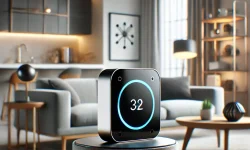What topics are the media talking about most right now and what are they likely to be interested in hearing more about from your client? Here are just three of the (currently) hot topics that we know journalists are particularly keen on:
AI and automation technologies
Thanks to digital transformation, the innovation and leveraging of smart technologies have exploded and, following GDPR coming into effect, businesses are using the rising machine-learning (ML) technologies to implement more efficient and effective business transformation solutions, to ensure compliance.
The ability to harness algorithms via an application programming interface (API) will be a giant step forward in the adoption of intelligent applications for both enterprises and service providers.
In insurance, for example, the rise in machine learning and business transformation solutions offers the ability to classify photos of accidents, while healthcare providers could use ML to identify subtle differences and changes in imaging scans. Real-time data integration, using blockchain, automation, cloud and other technologies, looks set to revolutionise banking tech and will also offer improved risk mitigation, such as signature verification solutions against fraud and identify theft.
New business and operating models
There is a continuing rise of partnerships in order to address the changing marketplace in most sectors. Advances in technology and consumer demand have had a steady, constant impact, which successful companies have recognised in order to adapt to accordingly. This accelerated rate of change is putting intense pressure on the traditional ways of doing business, so as the market changes, partnerships are also changing.
Due to the need for partnerships to become more agile, embrace technology, and capitalise on new and advanced capabilities, the connections being made between partners is happening much faster than before. In offering a new business model together, partners can now build on a collaborative and innovative solution design process that begins straight away, providing what customers want quicker. This, in turn, offers a faster route to market and cuts costs while at the same time also, hopefully, increasing revenue generation.
“As-a-service” models are exploding onto the business scene and are in demand services, thanks to their agility, ability to streamline operations, flexibility and cost. By focusing only on what customers need and offering additional services on a pay per use basis, as-a-service can boost productivity and efficiency, so is proving to be a very popular new business model.
Investment in digitalisation and analytics solutions
Customer-centricity is all the rage right now so there is an evolution of technology in line with changing industry trends and customer demands, as businesses focus more on customer experience for success and growth. As a result, omnichannel delivery is key so user experience analytics solutions and customer engagement platforms have become fashionable. The former give businesses insight into what visitors to their sites are doing, what content they might be most interested in or where they get frustrated and leave the site altogether. The latter brings something new to the digital customer experience sector with a powerful integrated social, live chat and CRM platform.
On the High Street, the department store was once king. Nowadays though, things are different as the rise of internet shopping and the endless “aisles” available to browse from the comfort of your own home, or while out on the bus, is undermining the value of department stores and challenging their very business model. Here is where technology holds the key to survival and, increasingly, department stores and other retailers, are having to adapt their business models to incorporate new technologies that will help them remain competitive.
Leveraging new and intelligent technology to increase efficiency could be the key to department stores being able to develop unique offerings. Introducing robotic process automation (RPA) into a traditional retail business, for example, could free up staff time to focus on providing a frictionless start-to-finish customer experience. The click and collect option being available online for customers is also a key consideration, encouraging online shoppers to come into the store.









